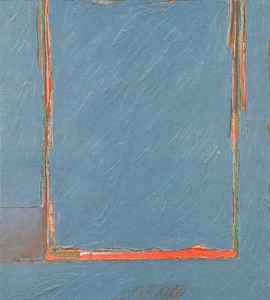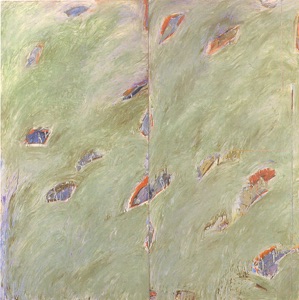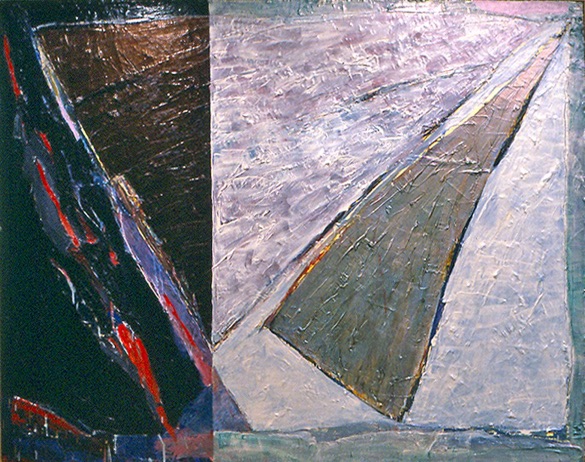Blair Sharpe—Artist Statement

The problem was never how to paint but what to paint. A great friend and mentor, Rick Gorman, told me a true artist will always be able to figure out how to do the things they want.
I never had the temperament to be a bona-fide expressionist, nor that of a total formalist, although there are aspects of both in my work. One thing I knew was that I had a strong affinity to the abstract. I had no interest whatsoever in pursuing representational forms. Bacon and Diebenkorn had the figure pretty much covered, the nature morte was, well, less nature, more morte. I was less attracted to the landscape than my Canadian and British antecedents would predict.
The way out of this dilemma, at least initially, was a kind of systems based approach inspired in part by Buckminster Fuller, the new British constructivism as practiced by artists like Kenneth Martin, and the whole idea of the feedback loop. Mick Arnold, my A Level and Post A master and first of my three wise men, strongly encouraged my pursuit of these concepts.
Minimalism played a strong part in this as well. Frank Stella’s 1959 black ‘pinstripe’ paintings, particularly Delphine and Hippolyte at the Kunstsammlung Nordrhein-Westfalen in Düsseldorf were revelations to me. At the same time my interest was piqued by improvised musical forms, from the Grateful Dead to Ornette Coleman, which I saw as parallel processes to painting. Plus there was the ‘include-it-all’ approach of artists such as Kurt Schwitters, Jasper Johns, Robert Rauschenberg and Ed Kienholz.
Gestural abstraction wasn't letting me in, so I tried a grid/number based approach using repeating patterns à la the British systems painters. These were my first exhibited works, along with an experimental film I retroactively titled “Everything You Wanted to Know About Josef Albers But Were Afraid to Ask,” which bombarded the retina and visual cortex so rapidly that the “eye” always “saw” much more than was actually there. It did this with three coloured squares (red/yellow/blue) in three sizes edited to no more than 8 or so frames down to 3 frames of any given square. Projected at a standard 24 frames per second, the result was a rapid-fire combination of simultaneous and successive contrast overlaying each other. It was pure energy-synergy. The film eventually destroyed itself, giving it an appropriately Dada ending.
Back in Canada I was fortunate to encounter the next two wise men: painter extraordinaire Rick Gorman, an erstwhile experimental filmmaker and an incredible draughtsman; and James Boyd, mainly known for his radical approach to intaglio printmaking but also a carver of doors and no slouch as a painter. My figure drawing needed work and I needed to escape the confines of a pure geometric approach. My painting was getting far too procedural.
From Jim Boyd I learned “anything goes.” Sounds like a small thing, but we all need permissions now and then.
From Gorman I learned that paintings-in-progress had almost infinite mutability. You could spontaneously transform things. You could freely improvise. There could be more balance to expressive and formal approaches; they were not mutually exclusive. With oils you could pile the paint on, scrape it off, and begin again. With acrylic you could build in layers. This led to my long term consideration of the edges, boundaries and connections between the planes and zones of the painterly surface. The paintings could be simultaneously geometric and free. This has been a constant in my work since 1974. It continues to be fertile ground and avoids the end-game problems to which late modernism is prone.
October 2016


Hell and High Water, 1985, acrylic on canvas, 60” x 78” — coll: City of Ottawa Fine Art Collection
© Blair Sharpe 1985
